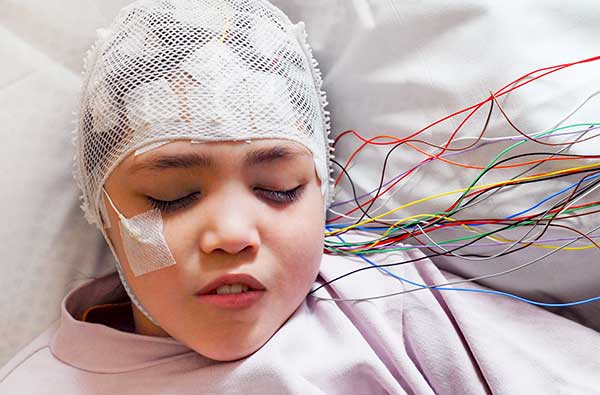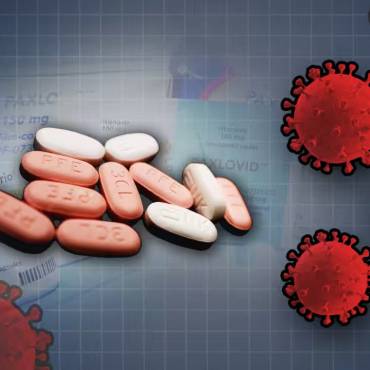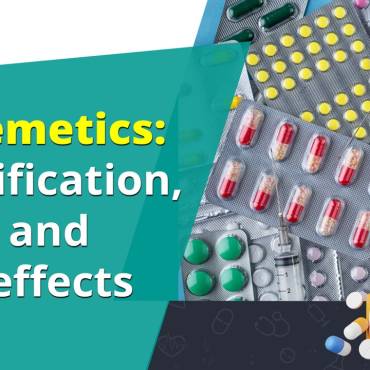Epilepsy is one of the most common childhood brain disorders, and about two-thirds of all children with Epilepsy outgrow their seizures by the time they are teenagers. So, caregivers must help their child maintain a healthy lifestyle and ensure regular medical visits. Epilepsy is a brain disorder in which an affected person suffers from recurring seizures.
Seizure disorder is caused by anything that injures the brain, including head injuries, infections, poisoning, or even brain development problems before birth. There are different types of seizures; some are short, and some last for a few seconds, while others can last a few minutes.
Types of epilepsies and their symptoms
There are different types of Epilepsy, which are classified by their seizure type. The categories of seizures are based on where they begin in your brain, your level of awareness while you develop seizure symptoms and the presence or absence of muscle movements.
There are two main seizure groups:
1. Focal onset seizures
Focal Epilepsy begins in one area, or network of cells, on one side of your brain. The type of seizure is also called a partial-onset seizure. There are two types of focal seizures:
-
- Focal onset seizure: This means you are aware during the seizure attack. Doctors once called this a simple partial seizure. The types of epilepsy symptoms include:
– Changes in your emotions
– Changes in your senses
– Seeing flashing lights, dizziness, and having a tingling sensation
– Uncontrolled muscle jerking, usually in arms or legs.
-
- Focal onset impaired awareness seizure: This type of epileptic seizure causes loss of consciousness and is used to be called a complex partial seizure. Symptoms are:
– Blank stare
– Repetitive movements like hand rubbing or finger motions, slip-smacking or chewing, and eye blinking.
2. Generalized onset seizures
General onset seizures affect many different cells present on both sides of your brain at the same time. Six types of generalized seizures include:
– Absence seizures: They are more common in kids, usually last less than ten seconds, and are commonly mistaken for daydreaming.
– Atonic seizures: You have lost muscle control, or your muscles are weak during a seizure attack. Your body parts may drop, such as your eyelids or head, or you may also fall on the ground within 15 seconds of the seizure.
– Tonic seizures: In this, your arms, back, legs, or whole body may be tense or stiff, causing you to fall.
– Clonic seizures: These happen when muscles continuously jerk for seconds to a minute or muscles stiffen, followed by jerking for seconds up to two minutes.
– Tonic-clonic seizures: During this, you lose consciousness, fall to the ground, and your muscles stiffen and jerk for about one to five minutes. During this seizure attack, you may bite your tongue and lose muscle control of your bowels or bladder, making you pee or poop.
– Myoclonic seizures: The type of seizure causes shock-like muscle jerks or twitches. It usually lasts for a couple of seconds.
Signs of Epilepsy in a child include:
– Staring
– Jerking movements of the arms and legs
– Stiffening of the body
– Loss of consciousness
– Breathing problems or stopping breathing
– Loss of bowel or bladder control
– Falling suddenly for no apparent reason, especially when associated with losing consciousness.
Seizure causes
Epilepsy causes are different for each individual, and some people have no identifiable causes of seizures. In other, healthcare providers can trace Epilepsy directly to genetics, autoimmune disorders, brain trauma, infectious diseases, or metabolic issues. Each case has different signs, diagnoses, and treatment options.
Epilepsy affects every child differently depending on:
– Age
– Types of seizures
– Response to treatment
– Having other health issues, etc
Some people with seizures can control their seizures with medication and can easily outgrow them altogether.
With the development of medicine and health care services, Epilepsy is more manageable. Many new anticonvulsant medications are available, and more are being tested. Alternative treatments are also developed for children who continue to have seizures while on medication.
Diagnosis for Epilepsy
Diagnosis involves identifying a condition or disease based on signs and symptoms. An epilepsy diagnosis is generally made when seizures occur more than once without an identifiable reason, such as fever or injury. The major diagnosis process involved:
– Detailed medical history – this includes questions regarding the mother’s pregnancy and delivery, any relatives with Epilepsy, and if the child had a high fever, serious head injury, and periods of staring, inattention, or breath-holding.
– A detailed account of the seizures- the person(s) present during the child’s seizures should communicate with the doctor and tell all the details.
– Physical examination – assessment of cardiac, neurological, and mental health.
– Blood test – A blood test is done to identify causes or other significant illnesses.
– CAT or CT scan – Computerised Axial Tomography (CAT) or CT scan determines the neurological lesion or illness.
– EEG – Electroencephalogram is used to assess the risk of seizure recurrence and may help determine seizure type and epilepsy syndrome.
– MRI – Magnetic resonance Image produces images of a child’s brain for evaluating children with new-onset seizures or seizures that may have started in a particular part of the brain.
After the examination, tests, and observations, a doctor determines whether a child has Epilepsy.
Treatment guidelines after diagnosis
After the diagnosis, the parents should work closely with the child’s doctor to classify what type(s) of seizures the child is having and what kind of Epilepsy the child has and discuss treatment options.
Treatment for Epilepsy
Every child is different, so their treatment procedure is also different. Epilepsy treatment starts with medications. However, Epilepsy is a complex condition, and every child’s response towards treatment may differ.
Seizures Prevention Drugs
Many drugs prevent seizures, and they are called anti-epilepsy drugs (AEDS) or anticonvulsant drugs, on the market, and new ones are in development. However, finding the best one for each child sometimes takes a while. If an epilepsy medication is not effective, then other options include:
– Brain surgery
– Medical devices to prevent and control seizures
– Dietary therapies include a ketogenic diet, modified Atkins diet, low glycemic index treatment, etc.
The child should take the medication as prescribed by the doctor, and if seizures do not appear for a few years during medication, then medication can be stopped after consulting the doctor.
Epilepsy can cause mood or learning disorders. Headaches, ulcers, and other physical conditions can also develop. Therefore, it is important to treat the condition on time.



